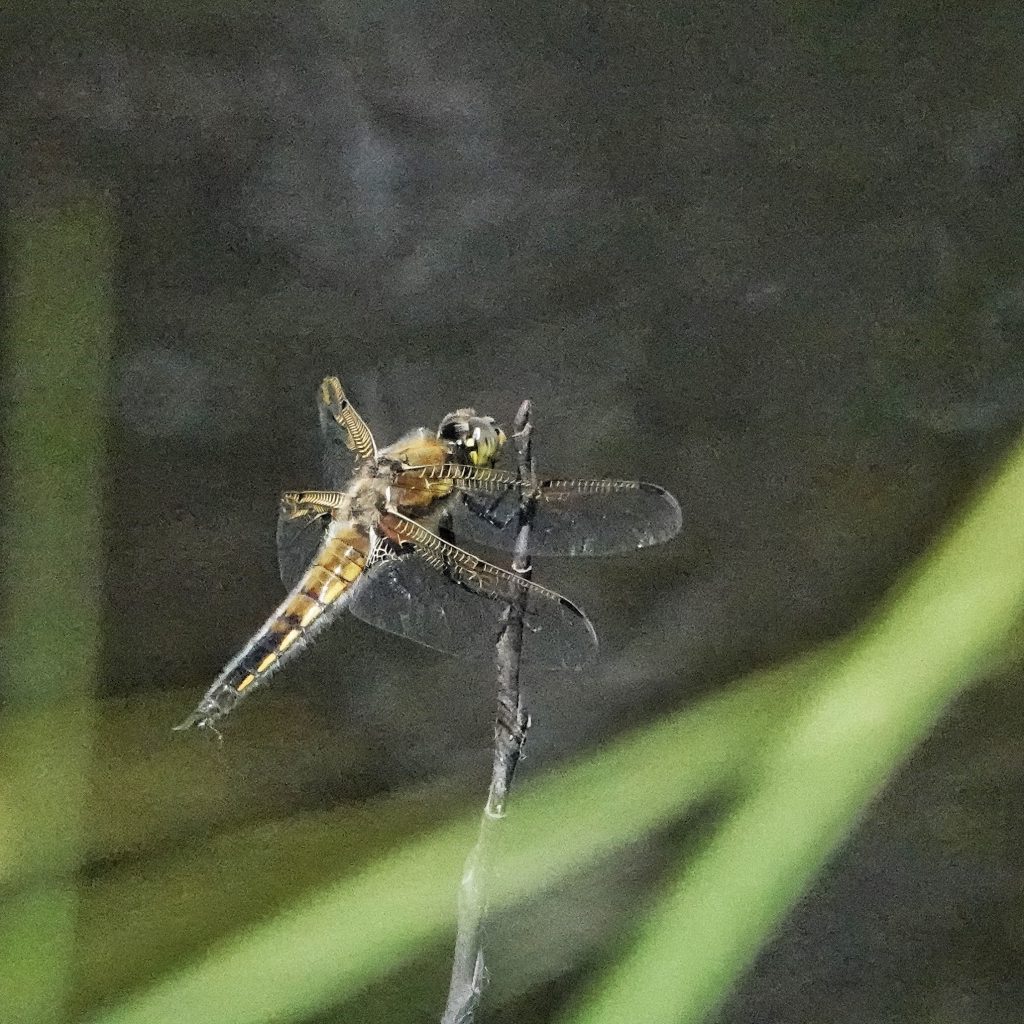
People who call Four-spotted skimmers dull colored have obviously never seen fresh ones. They are not flashy, but they are quite handsome, with contrasting earth tones. They can be very aggressive toward intruders in their territories, but also have the endearing-to-dragonfly-watchers trait of frequently returning to the same perch, where they watch for mating prospects and competition, as well as prey, and they seem to spend more time perching than other skimmers. Unlike most skimmers besides Plathemis lydia, they will periodically perch on the ground. Though they are known for infrequent mass migrations in Europe and Asia, those have not been recorded in North America.
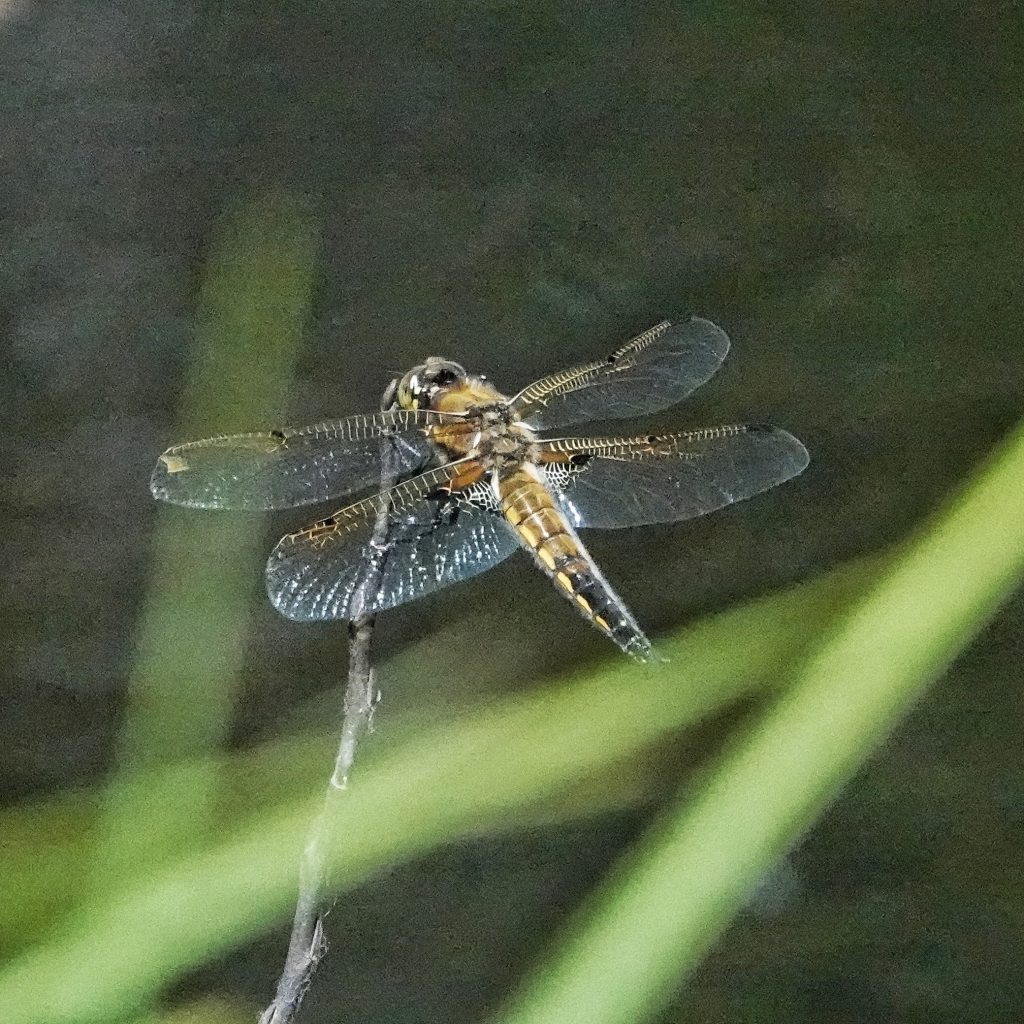
The books say these dragonflies are active from April into September, but that is somewhat misleading. Like the blooming times of flowers, these adult flights are timed by temperature, elevation, and latitude. For example the four-spotters are pretty much done in the lowlands by now, are winding down a little higher up, and are freshly emerging at higher elevations like South Prairie Lake at 3,000’ in the southern Washington Cascades.
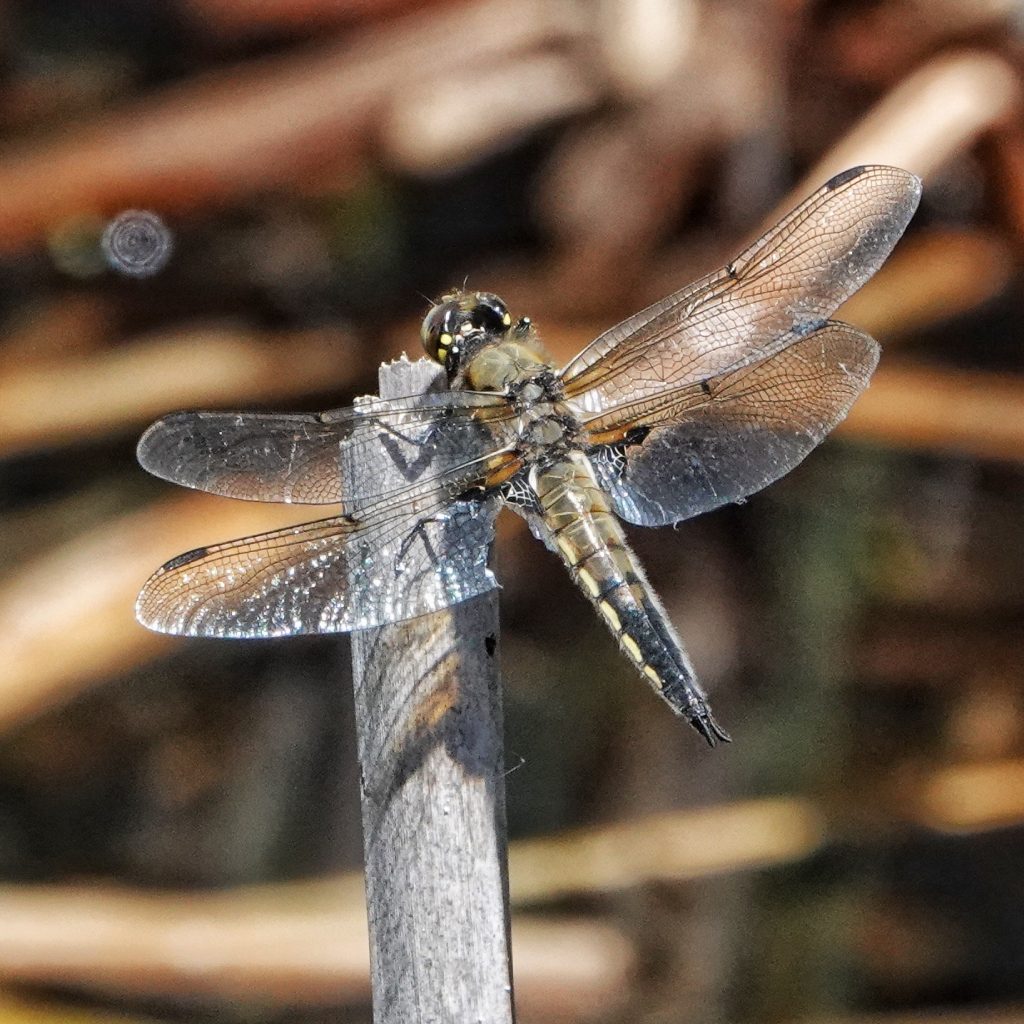
So, I see some nonsense online about it not making sense to call these dragonflies ’four-spotted’.However, all dragonflies have a pterostigma, so those hardly count as spots. And the markings at the base of the hindwings are just that- basal wing markings, common to many species. But the spot in the center (at what is called the nodus) of the leading edge of all wings is unusual and distinctive, and since there are 4 wings the aggregate would be 4 spots.
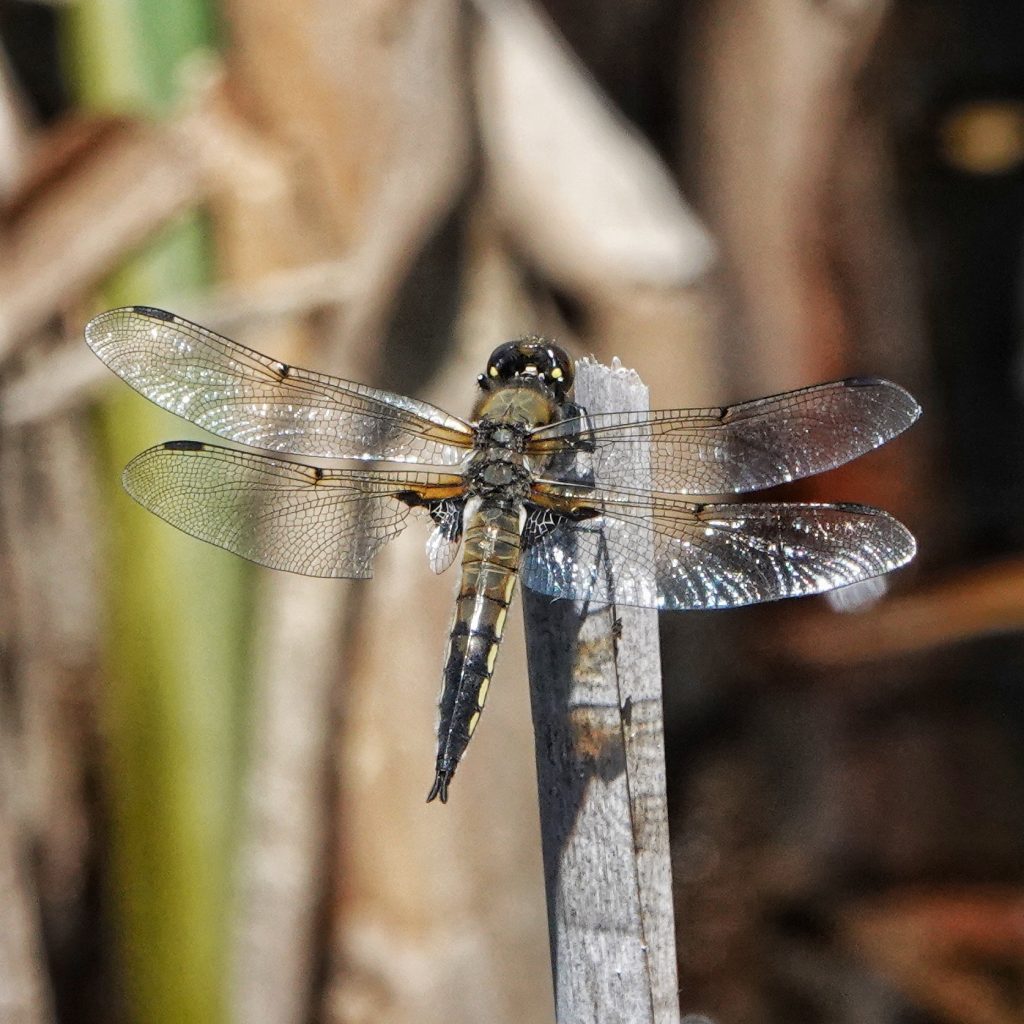
Description– Large (body length 42-46mm; wingspan 68-74mm) mostly brown dragonflies with a tan face, yellow markings on the sides of the abdomen and fainter on the thorax, and dark brown to black near the end of the abdomen; wings have yellow costa and crossveins on leading edge, a dark spot at the nodus in the center of the leading edge of each wing, and yellow brown and black markings at the base of the hindwings; males and females with essentially the same markings, but females have a thicker abdomen.
Similar species– No other brown skimmers in our region have small dark spots at the nodus.
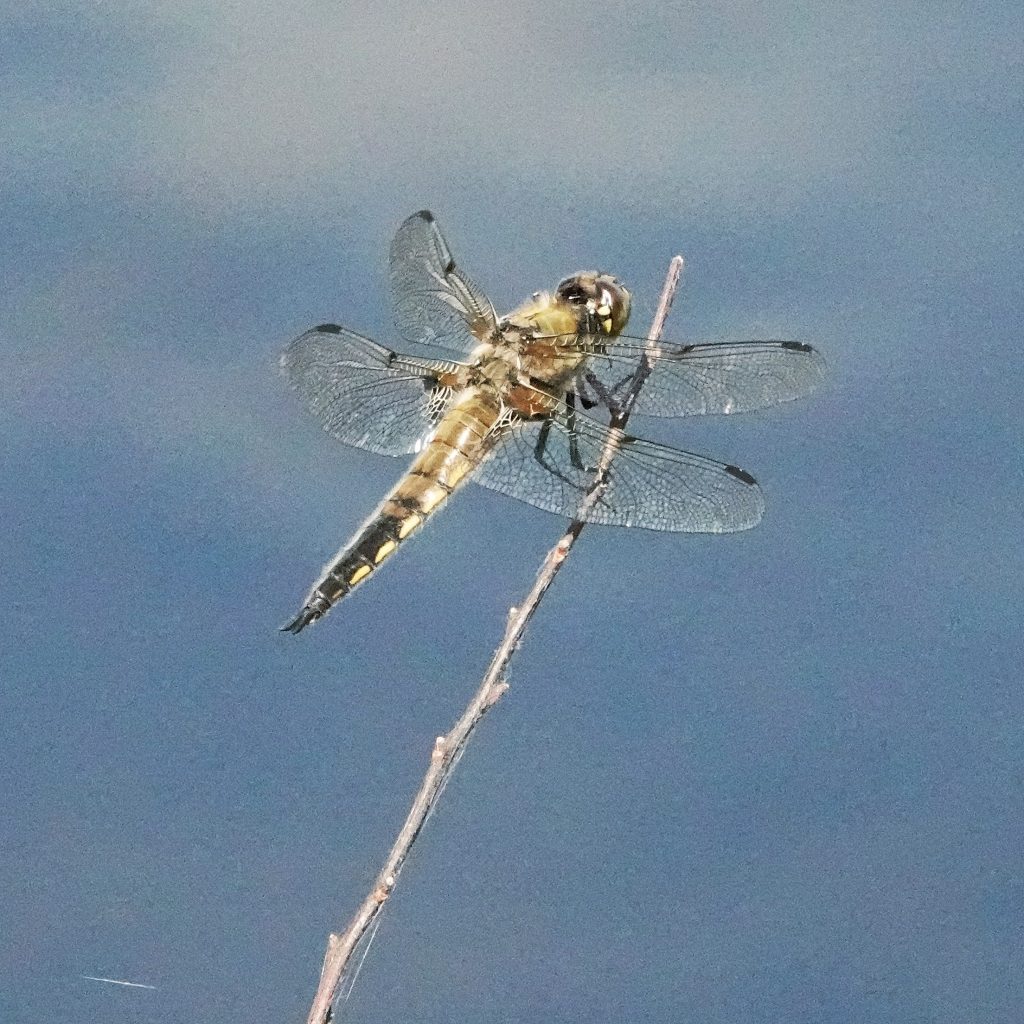
Habitat– “Lakes and ponds with mud bottoms and from little to much emergent vegetation. Prefers acid waters, and common at northern bog lakes and ponds.” Dennis Paulson, “Dragonflies and Damselflies of the West” (2009)
Range– Circumboreal; region wide in the PNW in appropriate habitat.
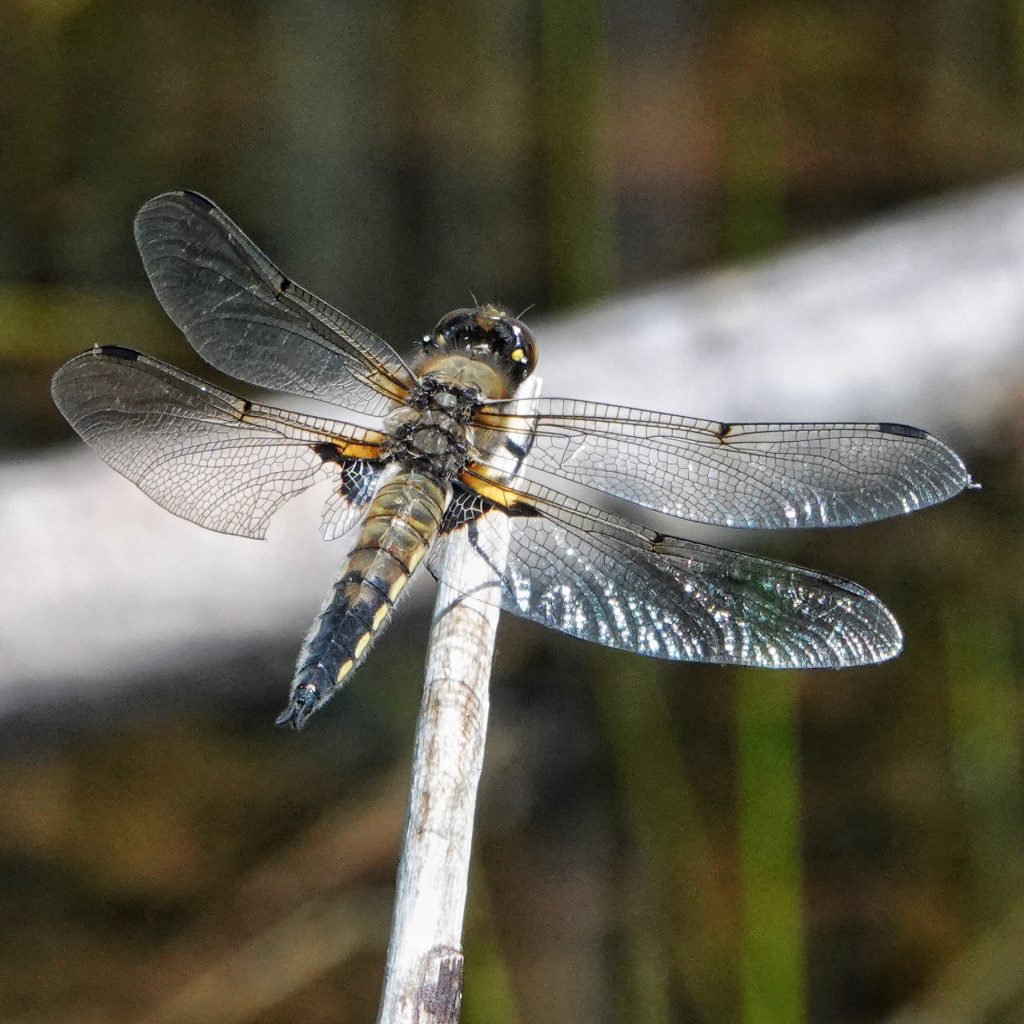
Eats– Naiads feed on aquatic insects, small fish, and small amphibians, mostly tadpoles; adults prey mostly on small Diptera like mosquitoes and midges, and sometimes on smaller dragonflies and damselflies.
Eaten by– Fish and waterfowl consume the naiads, especially when they are making their way to the surface; larvae are intermediate hosts of the trematode (fluke worm) Prosthrogonimus ovatus; adults preyed upon by many insectivorous birds.
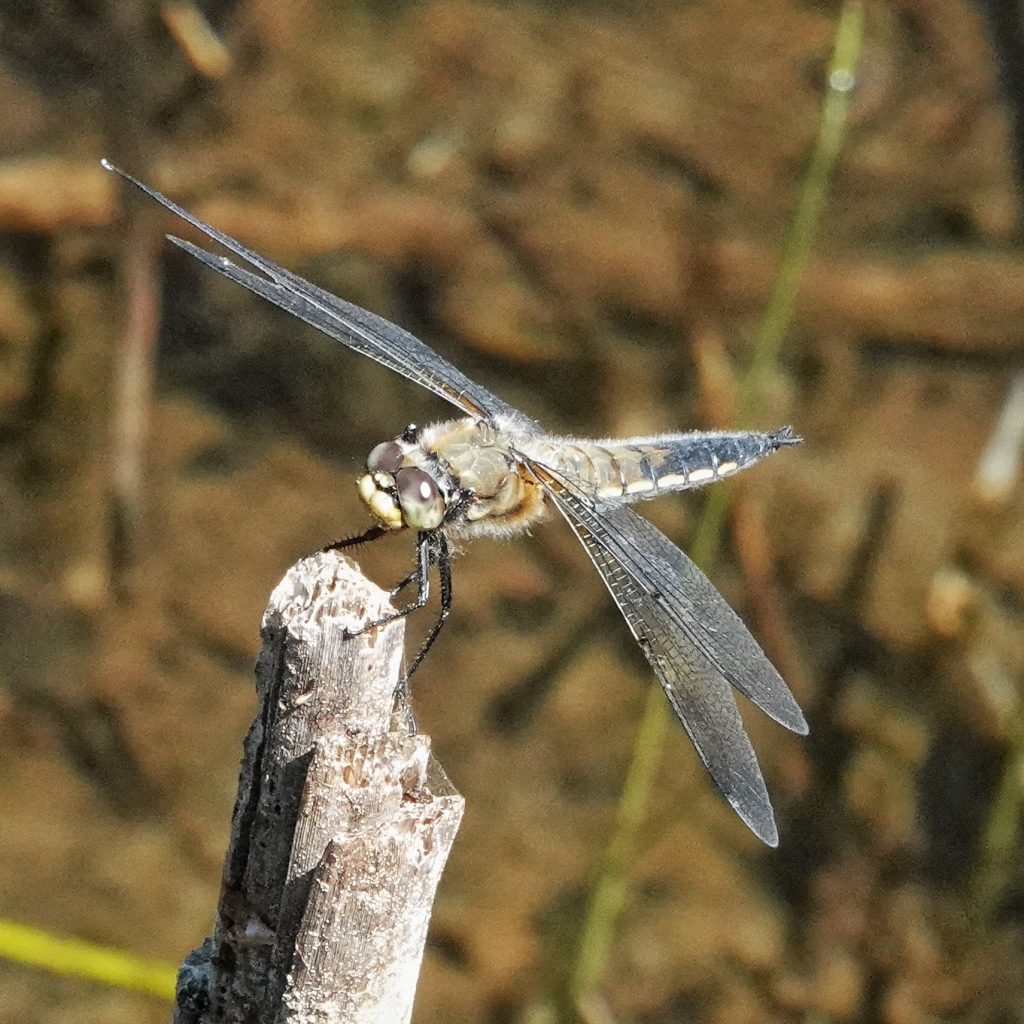
Adults active– April to September in our region.
Life cycle– “Pair copulate briefly (but up to a minute or more) in flight; oviposition may begin immediately, or female flies away. Females oviposit by tapping several times in small area, then moving a foot or two to repeat; may be in shallow seep. Male guards in many cases. During maturation period, sometimes seen far from water”. Dennis Paulson, “Dragonflies and Damselflies of the West” (2009); naiads live mostly buried in the bottom, and may take up to two years to complete their larval instars.
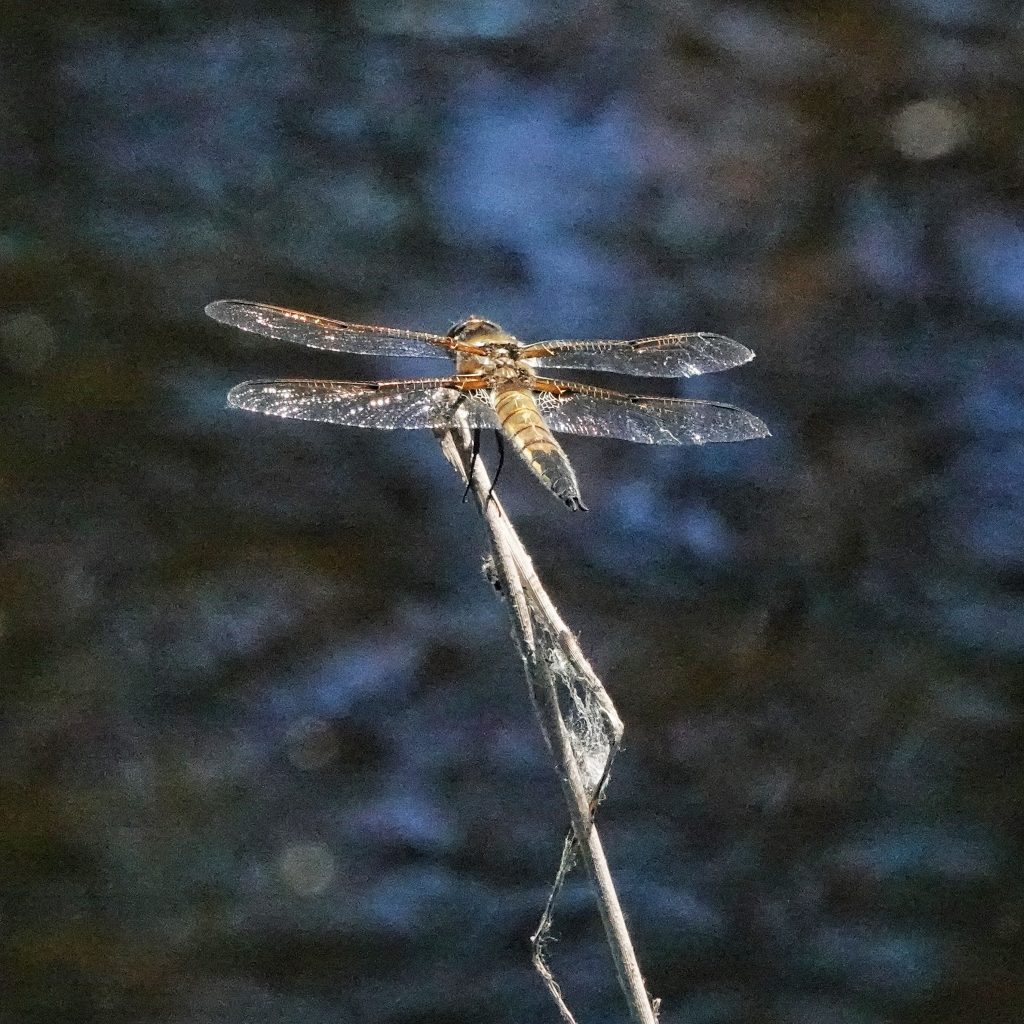
Etymology of names– Libellula comes from the Latin word for ‘little book’, and refers to the open wings being spread like the pages of a book. It was Linnaeus’ original generic Latin name for all dragonflies. The specific epithet quadrimaculata is from the Latin word for ‘ having 4 spots’, which refers to the aggregate of the spot in the center of the leading edge of each wing.
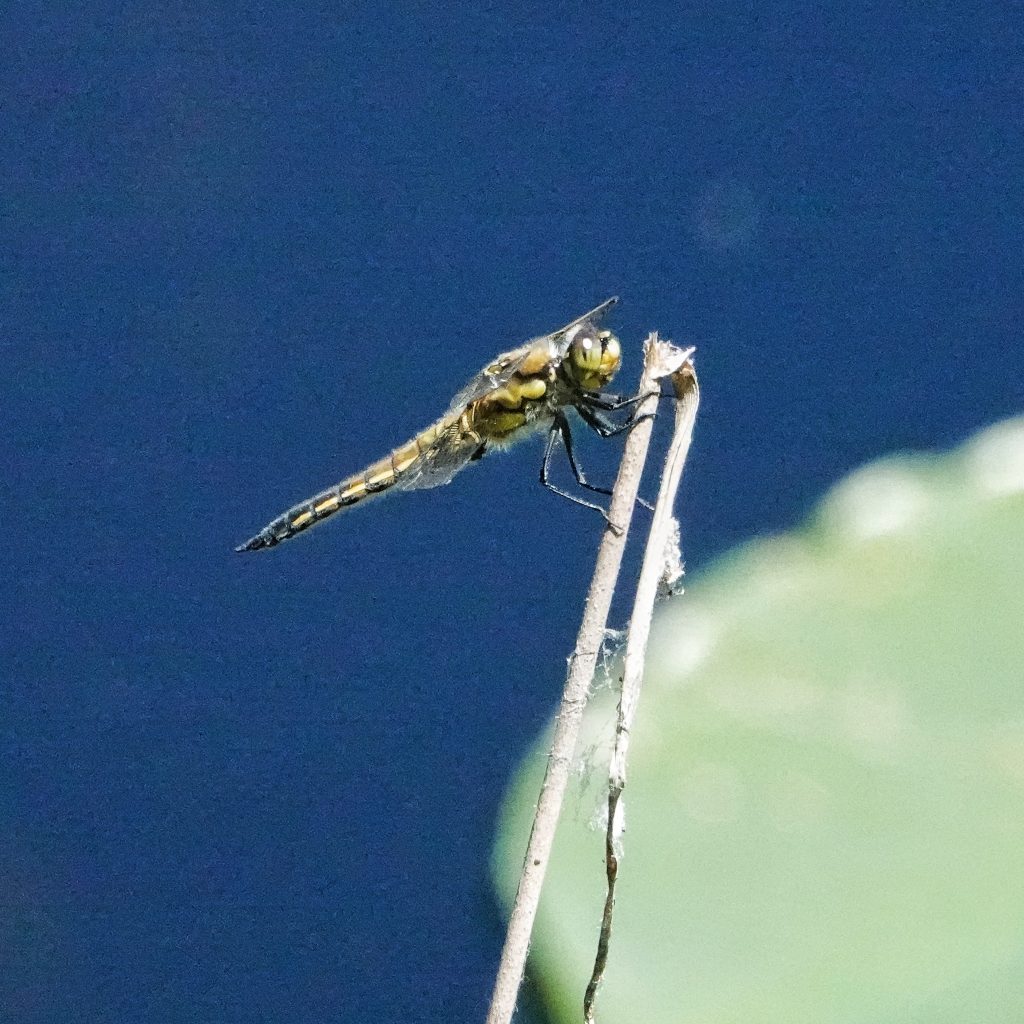
Four-spotted Skimmer (Family Libellulidae) – Field Station
Alaska State Insect | Four-Spot Skimmer Dragonfly
Libellula Quadrimaculata – Online Field Guide
https://en.wikipedia.org/wiki/Four-spotted_chaser
